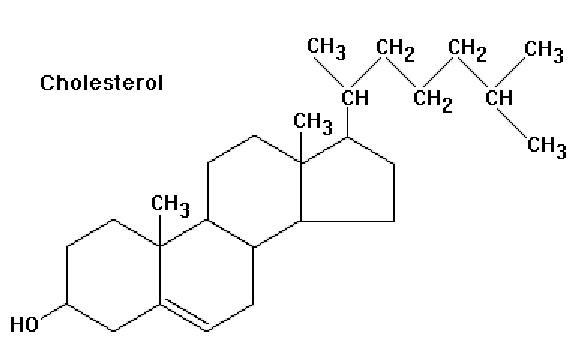Definition of Cholesterol
Lipids can be divided into two main categories: Fat (mainly triglycerides) is the most abundant lipid in the human body which is the major source of human body. Lipid is the basic component of biofilm, which consists of phospholipids, Glycolipid, and a very important one called cholesterol. Cholesterol is widely found in animals, especially in the brain and nerve tissue. Its solubility is similar with fat -- insoluble in water, soluble in ether, chloroform and other solvents. Cholesterol is an indispensable material for animal tissue cells. It is not only involved in the formation of cell membranes, but also raw materials for the synthesis of bile acids, vitamin D and steroid hormones.
With the depth research on cholesterol, the different Roles of Choleatrol have been identified. It is usually defined as HDL cholesterol and LDL cholesterol, the specific information about this two types will be introduced in this post:
HDL cholesterol
HDL cholesterol is synthesized by liver, including the phospholipids, apolipoprotein, cholesterol and a small amount of fatty acids. The main physiological function is to transfer phospholipids and cholesterol. High-density lipoprotein is an anti-atherosclerotic lipoprotein, a protective factor for coronary heart disease. It can promote the elimination of cholesterol in peripheral tissues and decrease the risk of atherosclerosis. Cholesterol carried by high-density lipoprotein molecules is the reverse transport of endogenous cholesterol ester, bringing it into the liver, and then remove the blood out. High-density lipoprotein uptake cholesterol from the cell membrane, lecithin cholesterol acyl transferase catalyzed by cholesterol ester, and then carry the cholesterol ester transferred to VLDL and LDL. High-density lipoprotein contains 20% to 30% of the total cholesterol.
Scientist found that HDL cholesterol has a positive effect on human health:
HDL can enhance blood lipid metabolism, keep the blood vessels and make the blood vessels cleaner without any damage to the blood vessels, which is the only recognized intravascular lipid "scavenger” by international medical community.
HDL has antioxidant activity which can protect LDL (one of the risk factors of heart disease) from oxidation
HDL can enhance the stability of intravascular lipid plaques, inhibiting plaque rupture or shedding obstruction of blood vessels, so that it can reduce the risk of coronary heart disease.
LDL cholesterol
LDL cholesterol can reflect the number of low-density lipoprotein which is the main function of cholesterol transfer to extrahepatic tissue cells.
Negative Effect of LDL cholesterol on Human Health
LDL cholesterol will lead to fat deposited in the blood vessel wall and the formation of atherosclerosis, resulting in vascular wall injury. So that the circulation of platelets gathered solidification, causing vascular obstruction, angina, myocardial infarction, coronary artery disease.
High LDL cholesterol will lead to hypercholesterolemia, hypertriglyceridemia, mixed hyperlipidemia, low lipoproteinemia several symptoms.
Our body function is inseparable from cholesterol. Whatever HDL or LDL, the body needs cholesterol to work properly. Understand LDL (bad cholesterol) and HDL (good cholesterol) levels and maintain the balance is important for overall health.
These are some information about HDL cholesterol and LDL cholestrol.
Related Service:
